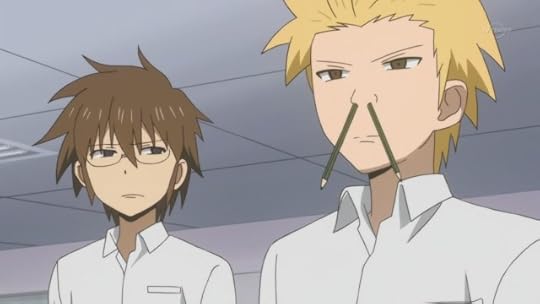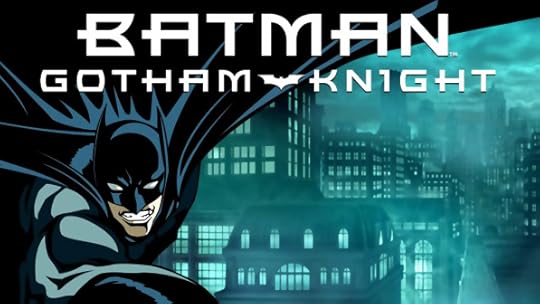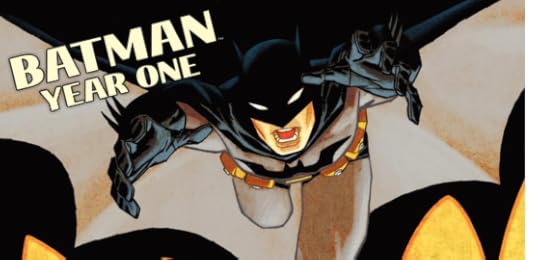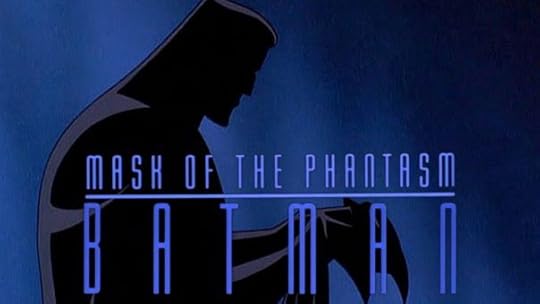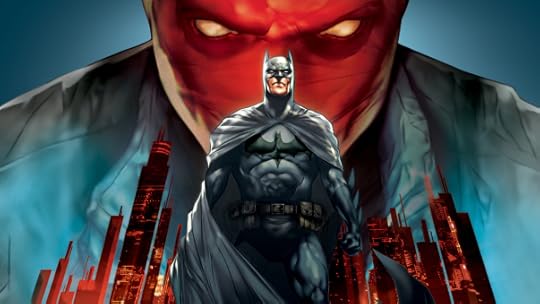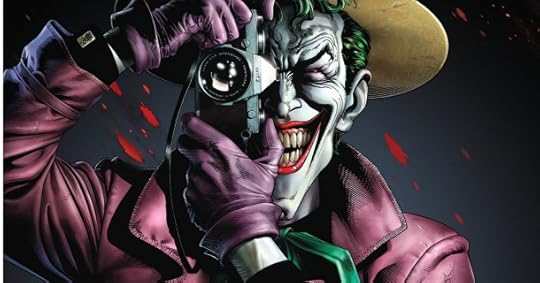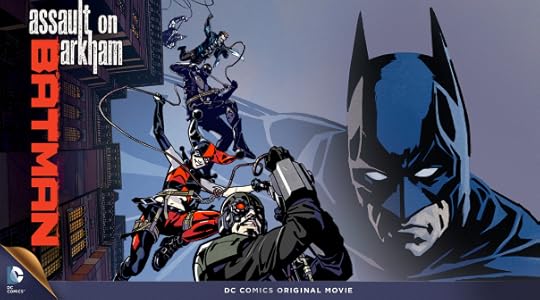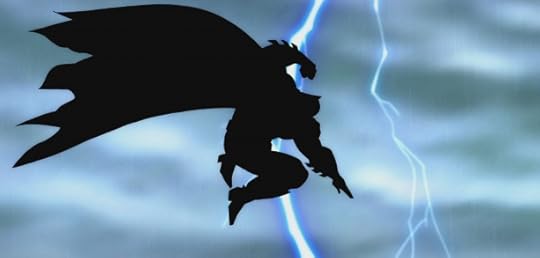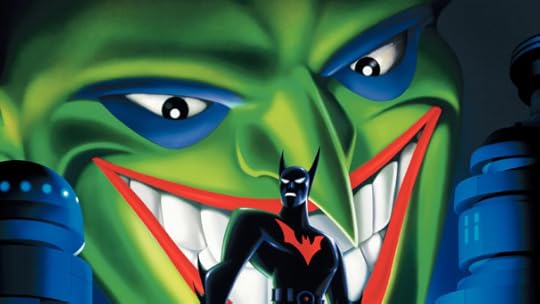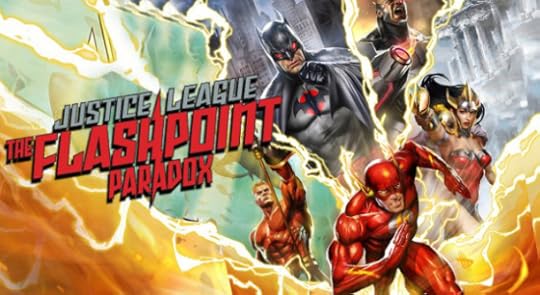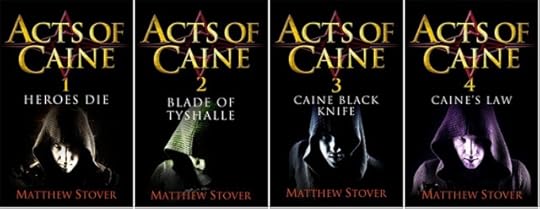Christopher Keene's Blog, page 16
August 29, 2016
Science Fantasy (Via Post Apocalypse)
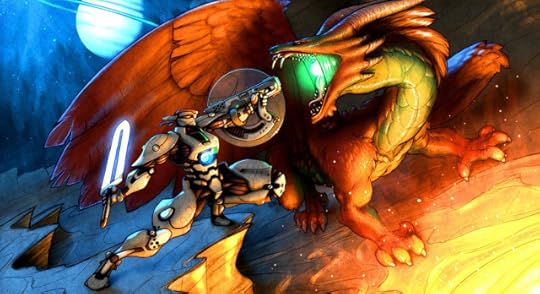 Science fantasy can be a difficult genre to pin down. I like to think of it either as a fantasy world created through sci-fi elements (e.g. post apocalypse, cyberpunk, space opera) or vise versa. Considering these bridging genres can be fun plot tools to work with, I’ve decided to give examples of how using them to write science fantasy plot lines might work. This first example mostly uses the post apocalypse genre as the means of bridging sci-fi to fantasy.
Science fantasy can be a difficult genre to pin down. I like to think of it either as a fantasy world created through sci-fi elements (e.g. post apocalypse, cyberpunk, space opera) or vise versa. Considering these bridging genres can be fun plot tools to work with, I’ve decided to give examples of how using them to write science fantasy plot lines might work. This first example mostly uses the post apocalypse genre as the means of bridging sci-fi to fantasy.
Science Fiction
Interstellar space travel via hyper-gates allows for humans to exist on two planets at once. The hyper-gate on one end is destroyed, killing the majority of people on that planet. In reaction, the people on the other planet are too scared to make another hyper-gate, leaving the planet of the destroyed hyper-gate for dead. The technology of this planet continues to advance until much of it is done through genetic advancements, becoming mostly indistinguishable from magic.
Post Apocalypse
On the other planet, which is mostly destroyed by falling debris from the exploded hyper-gate, a few humans survived, and go out in search of others. A new society is created out of what meager technology can be found. They form their own culture and history, the destruction of the hyper-gate becoming a part of their legends. Millennia pass and science and tech has regressed to the point that resources are scarce and the societies have turned into feuding states.
Fantasy
People from the advanced planet have finally gotten over their fear of interstellar space travel and send a group of people back to the destroyed world to see if they can reconnect with it. They are cut off from their homes but meet with the human inhabitants. One of them makes himself out to be a god of the hyper-gate legend and has all but one of the others in the group killed by his new followers. The one who escapes breeds with a woman, dying before he can tell his son about the genetic abilities he has. The son believes them to be the same magic as the new god ruler of their world has, and that he is the only one who can destroy him.
And there we have it, an example of a story created by bridging the science fiction and fantasy genres.


Science Fantasy Story (Via Post Apocalypse)
 Science fantasy can be a difficult genre to pin down. I like to think of it either as a fantasy world created through sci-fi elements (e.g. post apocalypse, cyberpunk, space opera) or vise versa. Considering these bridging genres can be fun plot tools to work with, I’ve decided to give examples of how using them to write science fantasy plot lines might work. This first example mostly uses the post apocalypse genre as the means of bridging sci-fi to fantasy.
Science fantasy can be a difficult genre to pin down. I like to think of it either as a fantasy world created through sci-fi elements (e.g. post apocalypse, cyberpunk, space opera) or vise versa. Considering these bridging genres can be fun plot tools to work with, I’ve decided to give examples of how using them to write science fantasy plot lines might work. This first example mostly uses the post apocalypse genre as the means of bridging sci-fi to fantasy.
Science Fiction
Interstellar space travel via hyper-gates allows for humans to exist on two planets at once. The hyper-gate on one end is destroyed, killing the majority of people on that planet. In reaction, the people on the other planet are too scared to make another hyper-gate, leaving the planet of the destroyed hyper-gate for dead. The technology of this planet continues to advance until much of it is done through genetic advancements, becoming mostly indistinguishable from magic.
Post Apocalypse
On the other planet, which is mostly destroyed by falling debris from the exploded hyper-gate, a few humans survived, and go out in search of others. A new society is created out of what meager technology can be found. They form their own culture and history, the destruction of the hyper-gate becoming a part of their legends. Millennia pass and science and tech has regressed to the point that resources are scarce and the societies have turned into feuding states.
Fantasy
People from the advanced planet have finally gotten over their fear of interstellar space travel and send a group of people back to the destroyed world to see if they can reconnect with it. They are cut off from their homes but meet with the human inhabitants. One of them makes himself out to be a god of the hyper-gate legend and has all but one of the others in the group killed by his new followers. The one who escapes breeds with a woman, dying before he can tell his son about the genetic abilities he has. The son believes them to be the same magic as the new god ruler of their world has, and that he is the only who can can destroy him.
And there we have it, an example of a story created by bridging the science fiction and fantasy genres.


August 27, 2016
The Problem with Comedy Anime
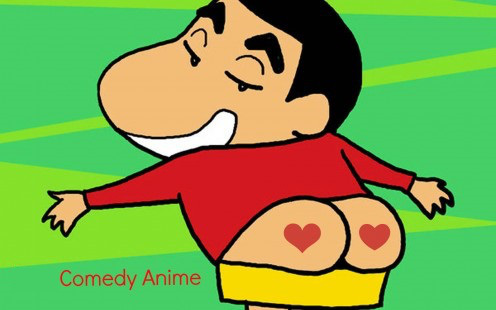 You would think that comedy, a genre that is so polarizing because not everyone has the same sense of humor, would be the easiest genre to complain about. This should go doubly for a medium like anime in which the humor resides in the culture or popular culture that the majority of us don’t come from or fully understand. But you would be wrong. Some times it is our own ignorance that makes this type of humor all the more funny, allowing our own minds to fill in the blanks and contextualize the humor to suit our own tastes, despite the fact that we are way off what the underlying meaning of the joke might entail.
You would think that comedy, a genre that is so polarizing because not everyone has the same sense of humor, would be the easiest genre to complain about. This should go doubly for a medium like anime in which the humor resides in the culture or popular culture that the majority of us don’t come from or fully understand. But you would be wrong. Some times it is our own ignorance that makes this type of humor all the more funny, allowing our own minds to fill in the blanks and contextualize the humor to suit our own tastes, despite the fact that we are way off what the underlying meaning of the joke might entail.
There’s a saying that if you have to explain a joke, it’s not a joke, or at least not a very good joke. With this contextualization in mind, if you’ve ever watched a subtitled comedy or slice of life anime you might have noticed the context footnotes being shown at the top of the screen just in case we wouldn’t understand some term or proverb that is unique to Japanese or Chinese culture. The mere act of having to read these set ups makes us one step behind a native Japanesian when the punchline is delivered. This is why I think many anime aimed at westerners resorts to using a type of comedy known as “universal humor”. And this humor is what I think is the main problem with comedy anime.
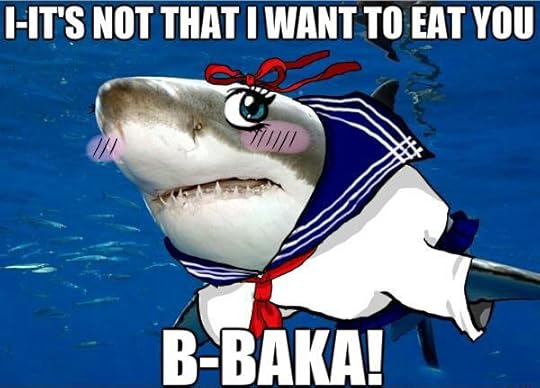 You may be asking, what is universal humor? It’s humor on such a base level that any child or simpleton can understand it, something that anyone of any culture can find funny in the right context. Examples of this are things like toilet humor, calling people unintelligent or a character being obviously, characteristically unintelligent or simply overreactions to unlikely or unfortunate situations. How can you tell when this universal humor is occurring in anime? Quite easily, in fact you might have picked some up already with the many visual and audible cues that are used constantly which are about as obvious as a drumming “Ba dum tsh” rimshot or a trumpet’s “womp womp womp”. I’m of course talking about the “Baka!”s, the “Nani!”s and the “Soka”s.
You may be asking, what is universal humor? It’s humor on such a base level that any child or simpleton can understand it, something that anyone of any culture can find funny in the right context. Examples of this are things like toilet humor, calling people unintelligent or a character being obviously, characteristically unintelligent or simply overreactions to unlikely or unfortunate situations. How can you tell when this universal humor is occurring in anime? Quite easily, in fact you might have picked some up already with the many visual and audible cues that are used constantly which are about as obvious as a drumming “Ba dum tsh” rimshot or a trumpet’s “womp womp womp”. I’m of course talking about the “Baka!”s, the “Nani!”s and the “Soka”s.
 So if those are some of the audible cues what are some of the visual cues? I’m so glad you asked hypothetical readers! There are of course, the ones that go hand in hand with the audible cues such us a zooming in and out or panning to another frame or character. However, the visual cues for universal humor that are generally a lot easier to identify are the comical facial expressions. This can be an over dramatic face, a confused blank face, or a face that doesn’t match with the anime’s design, instead adopting another for the sake of referencing some other anime or cartoon.
So if those are some of the audible cues what are some of the visual cues? I’m so glad you asked hypothetical readers! There are of course, the ones that go hand in hand with the audible cues such us a zooming in and out or panning to another frame or character. However, the visual cues for universal humor that are generally a lot easier to identify are the comical facial expressions. This can be an over dramatic face, a confused blank face, or a face that doesn’t match with the anime’s design, instead adopting another for the sake of referencing some other anime or cartoon.
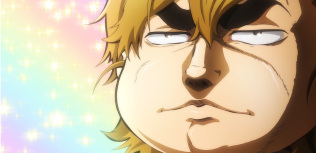 Examples of this can be seen in anime like FLCL where the animation suddenly flips to being similar to the style South Park uses, or when a slice of life ‘Kawaii’ character’s face suddenly adopts manly features more similar to a shounen style anime. And don’t forget there are always the swirly eyes, pursed lips and….unintentional up-skirt or boob-grabs to fall back on *sigh*. With that beautiful segway, I will talk about ecchi/romantic “comedy”, and yes I had to put the word comedy in quotation marks. In my previous post I wrote how I don’t like romance anime and one of the reasons I forgot mention in it was the romantic comedy genre. I seriously don’t understand the line between trying to make you laugh and trying arouse you in some of these shows. Japan’s sexuality has become a mainstream meme for a reason. That’s not to mention how rinse and repeat the nature of the jokes are. These main characters aren’t just clumsy, they’re opportunists predators.
Examples of this can be seen in anime like FLCL where the animation suddenly flips to being similar to the style South Park uses, or when a slice of life ‘Kawaii’ character’s face suddenly adopts manly features more similar to a shounen style anime. And don’t forget there are always the swirly eyes, pursed lips and….unintentional up-skirt or boob-grabs to fall back on *sigh*. With that beautiful segway, I will talk about ecchi/romantic “comedy”, and yes I had to put the word comedy in quotation marks. In my previous post I wrote how I don’t like romance anime and one of the reasons I forgot mention in it was the romantic comedy genre. I seriously don’t understand the line between trying to make you laugh and trying arouse you in some of these shows. Japan’s sexuality has become a mainstream meme for a reason. That’s not to mention how rinse and repeat the nature of the jokes are. These main characters aren’t just clumsy, they’re opportunists predators.
As I mentioned at the start, humor can be very polarizing and if some of this kind of humor is right up your ally, you might not get what I’m complaining about. However, for people who have been watching anime as long as I have, some of the punchlines end up becoming predictable to the point that some anime pick up on them and then use the assumptions to build up and make them funny in a completely new way. That’s how comedy should work, you should be surprised by a joke’s punchline, not roll your eyes at its predictability. In the end that’s my main problem with comedy anime, the humor is predictable, not all of it, but a lot of it.
The Problem with Romance Anime
The Problem with Slice of Life Anime


August 25, 2016
Reviews for Stuck in the Game – Round One
![Pageflex Persona [document: PRS0000446_00062]](https://i.gr-assets.com/images/S/compressed.photo.goodreads.com/hostedimages/1472212171i/20166328.jpg) The reviews are in and they’ve been pretty good so far (mostly four stars, which I can live with). Here are a few of the blogger reviews that gave spotlights to the book on their respective blogs. You should go check them out, if only to read the full reviews and see how I cleverly cherry picked these excerpts to make my book seem much better than it is.
The reviews are in and they’ve been pretty good so far (mostly four stars, which I can live with). Here are a few of the blogger reviews that gave spotlights to the book on their respective blogs. You should go check them out, if only to read the full reviews and see how I cleverly cherry picked these excerpts to make my book seem much better than it is.
(What? At least I’m honest about it.)
“I very much enjoyed reading Stuck in the Game. It appeals to the gamer in me, but also to my love of sci-fi and fantasy stories.” – Honya of Honyabookshelf
Read full review here.
“I stayed up longer than I should have just to finish reading it, and not many books can get me to do that.” – Nihon Joe from My-SF
Read review here.
“if you are fans of anime such as No Game No Life or Sword Art Online, this is a young adult sci-fi/fantasy novel you should check out.” – Lyn from LynLynSays
Read full review here.
Not to forget, there are dozens more reviews on Goodreads and Amazon for the ebook and paperback versions and I look forward to Round 2 with a few more of my favorite bloggers. For my next post I should have some interviews and a podcast that I was on so that you can all hear my annoying, stuttering voice… ENJOY!


August 23, 2016
Paperback Version Now Available!
![Pageflex Persona [document: PRS0000446_00062]](https://i.gr-assets.com/images/S/compressed.photo.goodreads.com/hostedimages/1472009381i/20137688.jpg) The paperback version of my book is now avaliable. Anyone who would like a hard copy can click here.
The paperback version of my book is now avaliable. Anyone who would like a hard copy can click here.


August 22, 2016
Top 10 Batman Animated Films
Aside from my last post, there are parts of DC Comics that I do enjoy, mostly to do with Batman. So with that in mind here are my top 10-ish animated Batman films. Because these are all pretty great, I’ve decided to do them in what loose chronological order I could find, and because trying to make a logical chronological order of these is almost impossible, you might find some mistakes with this multiverse’s chronology. Either way, if you ever decide to watch these films, this is a good viewing order.
First because these take place all over Batman’s timeline from his earlier training to his later days of crime fighting. The Animatrix film but with Batman instead of the Matrix, a really good collection of short films done by various animators.
Set during Batman’s first year as Batman. This is pretty much if Batman Begins actually followed the comic’s original story. Frank Miller’s second outing into Batman and still better than the majority of adaptations out there.
Set before Batman had any personal grudges against the Joker, this shows Batman in his prime and has a bit of the backstory of the sacrifices Bruce Wayne had to make in order to continue fighting crime as the caped crusader.
Set later on in Batman’s career covering the events of the second Robin’s, Jason Todd’s, death and rebirth. Involving both old and older Robin, Dick Grayson’s Nightwing, this film starts showing the baggage taken on by Batman’s sidekicks.
Set after both Robin’s have left and Batgirl has retired, this continues the streak of Batman’s sidekicks being messed up by the Joker. Adapted from the story by Alan Moore of Batgirl’s downfall, and in a way, the Joker’s as well.
Set after Batman has defeated most of his old enemies, this film focuses on the bad guy’s point of view. It’s pretty much Suicide Squad if it was good and doesn’t focus on any of Batman’s sidekicks because it’s set after the flashback events in Return of the Joker… probably.
Set during Batman’s retirement, it focuses on his return to crime fighting and his fight against Superman. At the end he is training younger men to work for him. I can only guess that this fails because of who he hires in the next film. (Doesn’t really fix the chronology considering the contradictions of the different way the Joker dies in them.)
A film set in the future Gotham of the Batman Beyond series where Terry McGuinness has taken the mantle of the caped crusader. This finalizes the sidekick story-lines this universe for it includes the story of Batman’s final Robin, Tim Drake, and how the the Joker in this universe is finally destroyed.
Although this film focuses on the Flash and other members of the Justice League more than Bruce Wayne’s Batman, it’s necessary for the chronology of these films for this is point that the Flash changes the DC universe into the New 52, and how this affects Batman from who was Batman in the alternative world.
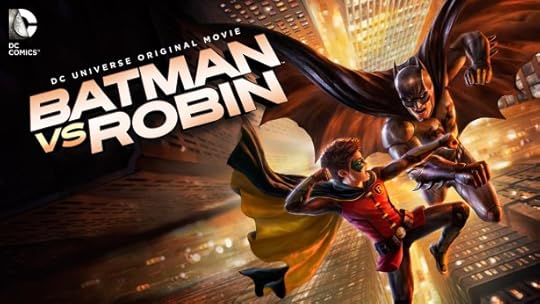 10-ish. The Damian Wayne Series
10-ish. The Damian Wayne Series
So where Tim Drake was the fourth and final Robin in the old universe, Damian Wayne, Batman’s son is the fifth Robin who follows the path of almost every other Robin in the old universe. He joins the Teen Titans like Dick Grayson, he is linked through the Al Gul family like Jason Todd and Damian also dies… and he’ll probably come back like them as well knowing DC. They include: Bad Blood, Son of Batman, Batman Vs. Robin and Teen Titans Vs. Justice League.
Now that The Killing Joke and A Death in the Family has been turned into films, one can only hope that The Death OF the Family will adapted soon as well, as it’s one of the more fucked up comics. It fits in between the equivalent of the flashback in The Return of the Joker but before the events of The Killing Joke… in the new universe… where every single character of the Bat family is still in action. One can hope.


August 17, 2016
Marvel vs DC: The Rotton Tomatoes Conspiracy
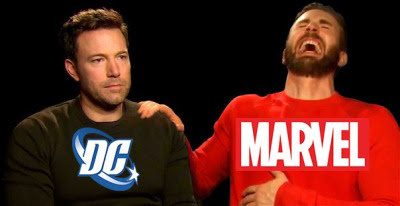 Whenever people defend or attack a Marvel or DC film, others always accuse them of being a Marvel or DC fanboy. At the moment Marvel films are doing better with critics, so if people complain about a DC film getting a bad wrap in comparison, they are automatically said to be DC fanboys.
Whenever people defend or attack a Marvel or DC film, others always accuse them of being a Marvel or DC fanboy. At the moment Marvel films are doing better with critics, so if people complain about a DC film getting a bad wrap in comparison, they are automatically said to be DC fanboys.
Some of the complaints are that the critics will automatically like a Marvel film because it’s a Marvel film and dislike a DC film because it’s a DC film, but I think there’s more to it than that. It wasn’t so long ago that it was DC films such as the Nolan Dark Knight Trilogy, or Burton’s two before that, or even the two Superman films before that, that the critics were loving. Is it just recently that all of the critics have become Marvel fanboys?
In a way, yes, when it comes to the newer films, and for a good reason. Now that films are favoring the serial form, the key is to build characters that the viewers can get behind and want to come back to see more of. The fact is that for these recent run of films the MCU just does this better than the DCU, and because of that, critics are going to enjoy the thing that is done better. There’s no Rotton Tomato conspiracy.
The DCU had too obvious disadvantages that undermined it. One was that their previous Batman series was very hard to top, giving it a shaky foundation to begin with so soon after it was finished, and second that it had to play catch up with the MCU which was four or five films in when the DCU had it’s first underwhelming debut. Inevitably these first impressions echoed in their sequels, no matter how much better or worse they were.


August 7, 2016
My Respect for Subtlety
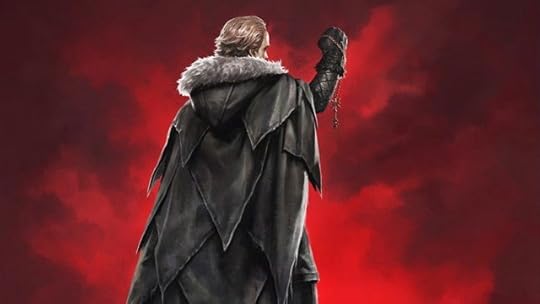 I heard something interesting the other day: that writer’s are illusionists. Like magicians using misdirection, authors and directors are supposed to develop characters with a clear motive. Whatever that motive may be, it can some times be used as misdirection for a more important overall motive that the character discovers nearer to the end. A good way for this to be done is for it to not only to be hinted subtly throughout the build up before the reveal, but also to have this “important motive” be at odds with the character’s
I heard something interesting the other day: that writer’s are illusionists. Like magicians using misdirection, authors and directors are supposed to develop characters with a clear motive. Whatever that motive may be, it can some times be used as misdirection for a more important overall motive that the character discovers nearer to the end. A good way for this to be done is for it to not only to be hinted subtly throughout the build up before the reveal, but also to have this “important motive” be at odds with the character’s
“original motive”, allowing for some beautiful inner conflict.
The real problem with using this formula is the method of delivery from the character’s viewpoint. The writer should give the reader all of the information needed to discover this important goal, but have it all be viewed through the eyes of someone only trying to accomplish their original goal. This way both the character, and the reader, are only seeing how this information might be used to accomplish it, giving a narrowed interpretation of a larger plot. This type of subtlety, when done well, can catch the reader off guard despite everything being in plain sight.
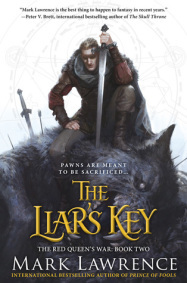 A recent example of this being done well was in The Liar’s Key by Mark Lawrence. Throughout the first and second book of this series the main character’s motivations has been to clear his gambling debts. Everything the reader sees that is to do with the larger plot is observed through the lens of how much things might be worth in case he could sell them to get rid of his debt. All the while he is slowly acknowledging little bits of information regarding a specific object that he already in possession of. Nearer the end, the character is offered all of the of the money he would ever need to cover his debts and live a happy life if he just hands over this object.
A recent example of this being done well was in The Liar’s Key by Mark Lawrence. Throughout the first and second book of this series the main character’s motivations has been to clear his gambling debts. Everything the reader sees that is to do with the larger plot is observed through the lens of how much things might be worth in case he could sell them to get rid of his debt. All the while he is slowly acknowledging little bits of information regarding a specific object that he already in possession of. Nearer the end, the character is offered all of the of the money he would ever need to cover his debts and live a happy life if he just hands over this object.
This is perfect example of inner conflict. It reveals how nearsighted he has been up until this point when compared to importance of this hidden motive, and through putting the pieces of the puzzle together, we are given a brilliant inner look at this character’s sudden development through this understanding. What makes this revelation brilliant is that you are given all of the information you would need to figure this out on your own, but the character’s first person narration colors this information in a way that we either don’t take seriously, or are only seeing it through the lens of how it could be used to pay off his debt or impress some woman.
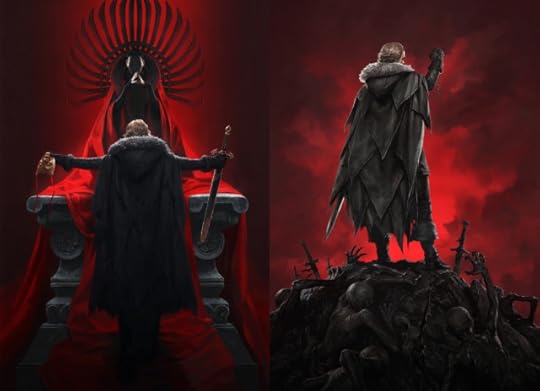 I try to this in my own stories, but it takes a level of mastery to be able to do it this well. When your motive is to get good enough to do certain things only to discover how fruitless this improvement was in the context of your situation, (one element of Stuck in the Games) it’s almost ironic in my own writing when I’m constantly discovering things like this that I could be better at which would be more useful to me. To be able to deliver such plot elements with this amount of subtlety, enough to catch the reader off guard, is a skill that I will endeavor to get better at. I can’t help but have respect for writers and directors who have the skill to pull this kind of subtlety for such an effect.
I try to this in my own stories, but it takes a level of mastery to be able to do it this well. When your motive is to get good enough to do certain things only to discover how fruitless this improvement was in the context of your situation, (one element of Stuck in the Games) it’s almost ironic in my own writing when I’m constantly discovering things like this that I could be better at which would be more useful to me. To be able to deliver such plot elements with this amount of subtlety, enough to catch the reader off guard, is a skill that I will endeavor to get better at. I can’t help but have respect for writers and directors who have the skill to pull this kind of subtlety for such an effect.


August 4, 2016
Ready… Steady… Book Launch!
![Pageflex Persona [document: PRS0000446_00062]](https://i.gr-assets.com/images/S/compressed.photo.goodreads.com/hostedimages/1470793937i/19965802.jpg) My novel STUCK IN THE GAME is now available on Amazon!
My novel STUCK IN THE GAME is now available on Amazon!
Anyone who wants to buy it on sale for a few bucks, now’s your chance. For those who want a hard copy, you’ll be able to order it from Barnes and Noble very shortly. I encourage anyone interested in reviewing it to do so, no matter how critical a beating you want to give it. Being my first book, this is a big first step for me and I can’t express my appreciation for anyone who helps support it.
Here’s the book launch page on Future House Publishing’s website. Click here for all the information on the book and how to get your hands on it.


August 1, 2016
Heroes Die by Matthew Stover [Book Review]
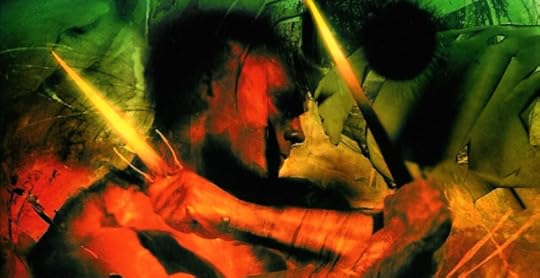 If Heroes Die was a stand alone book it would be my second favorite novel just under The Way of Kings. Alas it is not stand alone, and each sequel that follows it is as inferior as the last. Even so the series still gets a place in my Must Reads list for a few important reasons:
If Heroes Die was a stand alone book it would be my second favorite novel just under The Way of Kings. Alas it is not stand alone, and each sequel that follows it is as inferior as the last. Even so the series still gets a place in my Must Reads list for a few important reasons:
1. It has the balls to call itself science fantasy despite being an obscure genre as it falls under neither science fiction nor fantasy but rests perfectly in-between, 2. It uses elements that would dominantly be used in gaming anime and YA fantasy in the years to come but writes them perfectly for an adult audience and 3. it’s an undeniably kickass book.
Hari Michaelson is an actor on another planet that resembles a medieval fantasy world (which the books later try to justify through the silly concept that our ideas for medieval fantasy comes from this world). Working for a company that makes money from adventures on this world, he plays the infamous assassin, Caine Blackknife, a character who plays an integral part in shaping the very world he’s acting in. However, being practically owned by the company he works for, Hari is put into worse and worse roles, one of these roles being to befriend and kill a man who has powers akin to a god.
 There are about five characters worth writing home about in this book and they all get ample attention. Although all of them could be considered badass there’s only one that fits the role of the hero well and they do help to justify the title of the book, but that’s not Hari. In fact Hari takes pride in not being a hero, much to the dismay of his wife, who goes by the actress name Pallas Ril and who gets so much power she becomes like a force of nature. The villains are also interesting, especially Ma’elKoth who for a tyrant is actually pretty intelligent. His underling, Berne, a rapist master swordsman takes the place as Hari’s rival in the first novel and there are some pretty epic fights between them.
There are about five characters worth writing home about in this book and they all get ample attention. Although all of them could be considered badass there’s only one that fits the role of the hero well and they do help to justify the title of the book, but that’s not Hari. In fact Hari takes pride in not being a hero, much to the dismay of his wife, who goes by the actress name Pallas Ril and who gets so much power she becomes like a force of nature. The villains are also interesting, especially Ma’elKoth who for a tyrant is actually pretty intelligent. His underling, Berne, a rapist master swordsman takes the place as Hari’s rival in the first novel and there are some pretty epic fights between them.
The book is unique in that it swaps between first person and third person depending on the POV but it is in the first person that the narration really shines, Hari’s character voice rivaling that of Harry Dresden from the Dresden Files (what is it with the name Harry in fantasy anyway?). What makes it really stand out though is its attention to anatomy when it comes to the fights, which combines with the inner thoughts to feel a lot more visceral than your average action scene. Finally the ending, and what an ending! You can read a hundred books a year and not find an ending as satisfying as this one, which only makes the sequels all the more disappointing considering they are unnecessary.
Although I’ve been ragging on the sequels (which aren’t really that bad if I weren’t comparing them to the original), if you enjoy this book as much as I did, then you will probably enjoy the them as well, just not as much. Either way, this book is great and whether you’re a fan of fantasy or science fiction you should read it. The same goes for my own novel of the same genre when it is released this week. Now THAT’S how you do a Segway plug *pats self on the back*.
Total Rank:
Heroes Die: 9.5/10
The Acts of Caine Trilogy: 8.5/10



